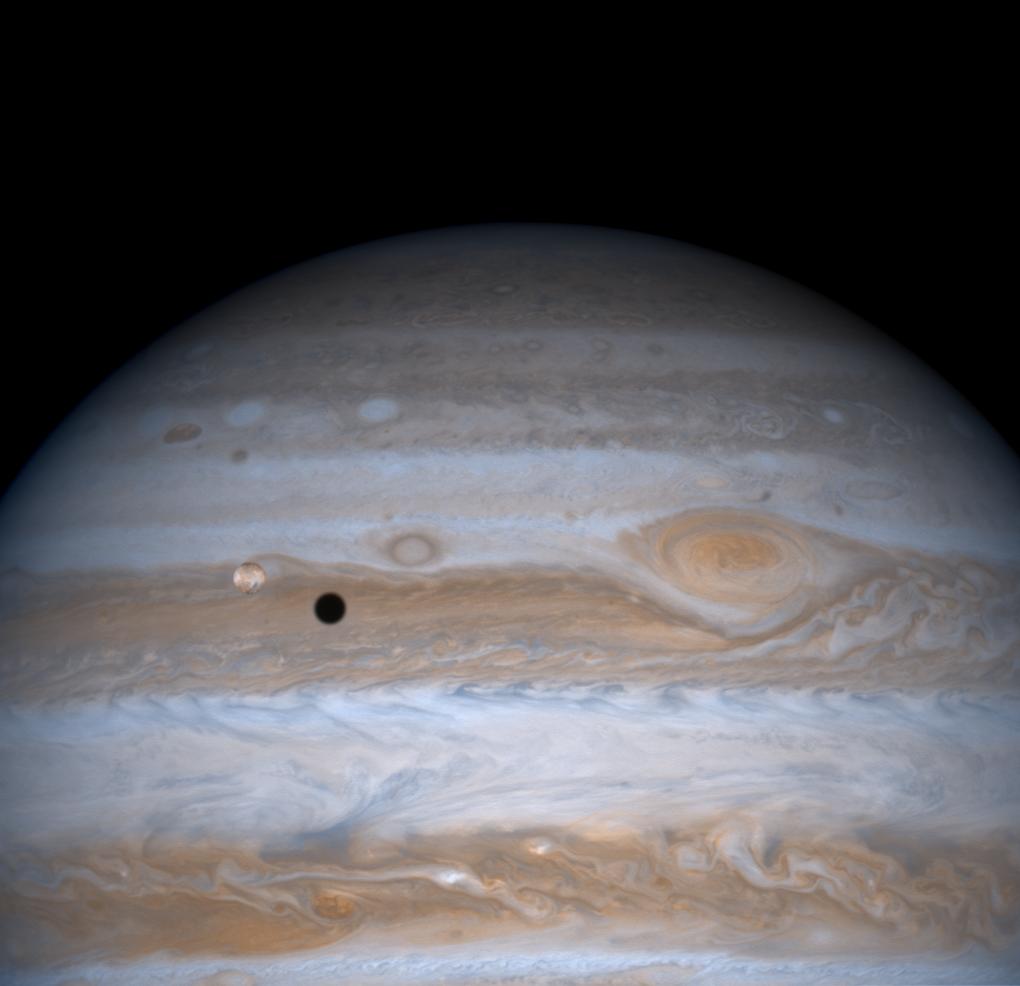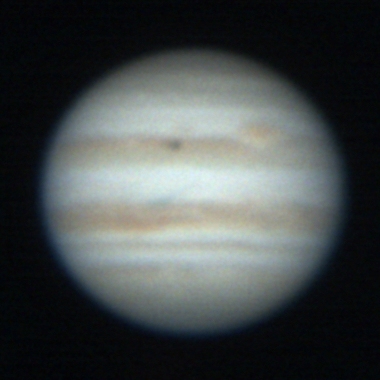| The Cassini-Huygens mission |

Jupiter's four largest satellites, including Io, the golden ornament in front of Jupiter in this image from NASA's Cassini spacecraft, have fascinated Earthlings ever since Galileo Galilei discovered them in 1610 in one of his first astronomical uses of the telescope.
Images from Cassini that will be released over the next several days capture each of the four Galilean satellites in their orbits around the giant planet.
This true-color composite frame, made from narrow angle images taken on Dec. 12, 2000, captures Io and its shadow in transit against the disk of Jupiter. The distance of the spacecraft from Jupiter was 19.5 million kilometers (12.1 million miles). The image scale is 117 kilometers (73 miles) per pixel.
The entire body of Io, about the size of Earth’s Moon, is periodically flexed as it speeds around Jupiter and feels, as a result of its non-circular orbit, the periodically changing gravitational pull of the planet. The heat arising in Io's interior from this continual flexure makes it the most volcanically active body in the solar system, with more than 100 active volcanoes. The white and reddish colors on its surface are due to the presence of different sulfurous materials. The black areas are silicate rocks.
Cassini is a cooperative project of NASA, the European Space Agency and the Italian Space Agency. The Jet Propulsion Laboratory, a division of the California Institute of Technology in Pasadena, manages the Cassini mission for NASA's Office of Space Science, Washington, D.C.
Image Credit:
NASA/JPL/University of Arizona
[NASA/JPL/Space Science Institute]
 ALPO-Japan Latest
ALPO-Japan Latest

 Jupiter2000 Apparition
Jupiter2000 Apparition
